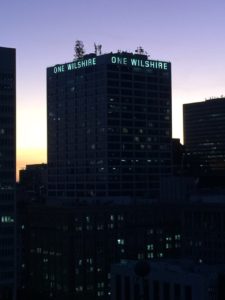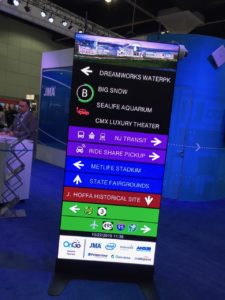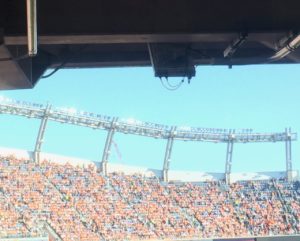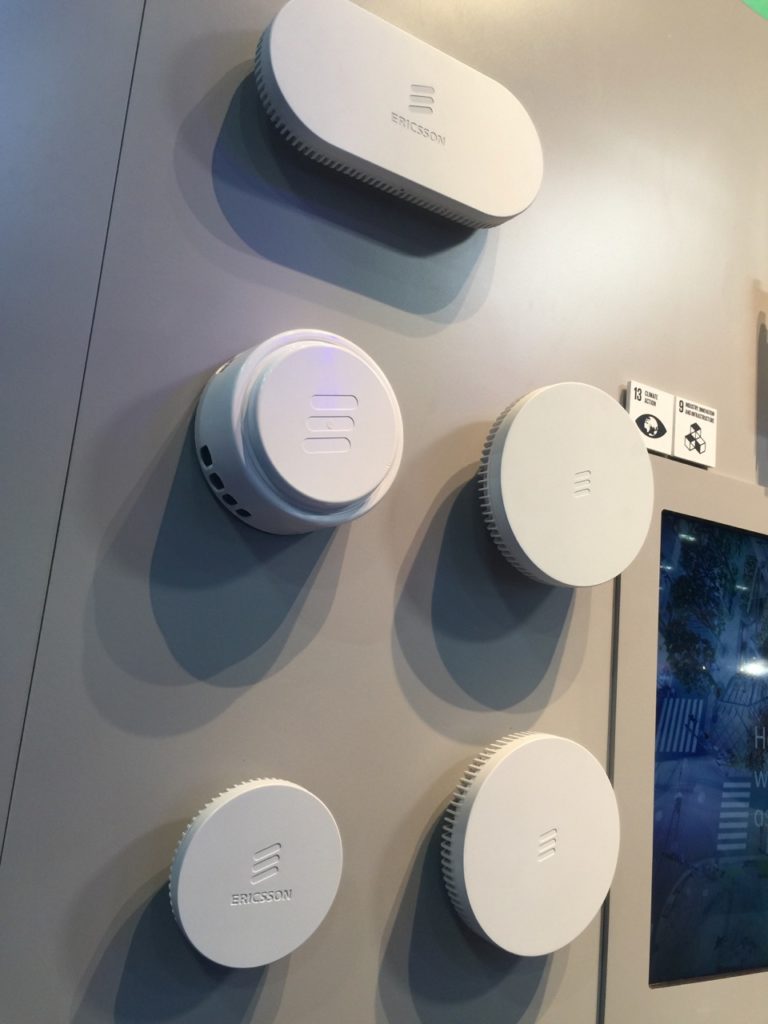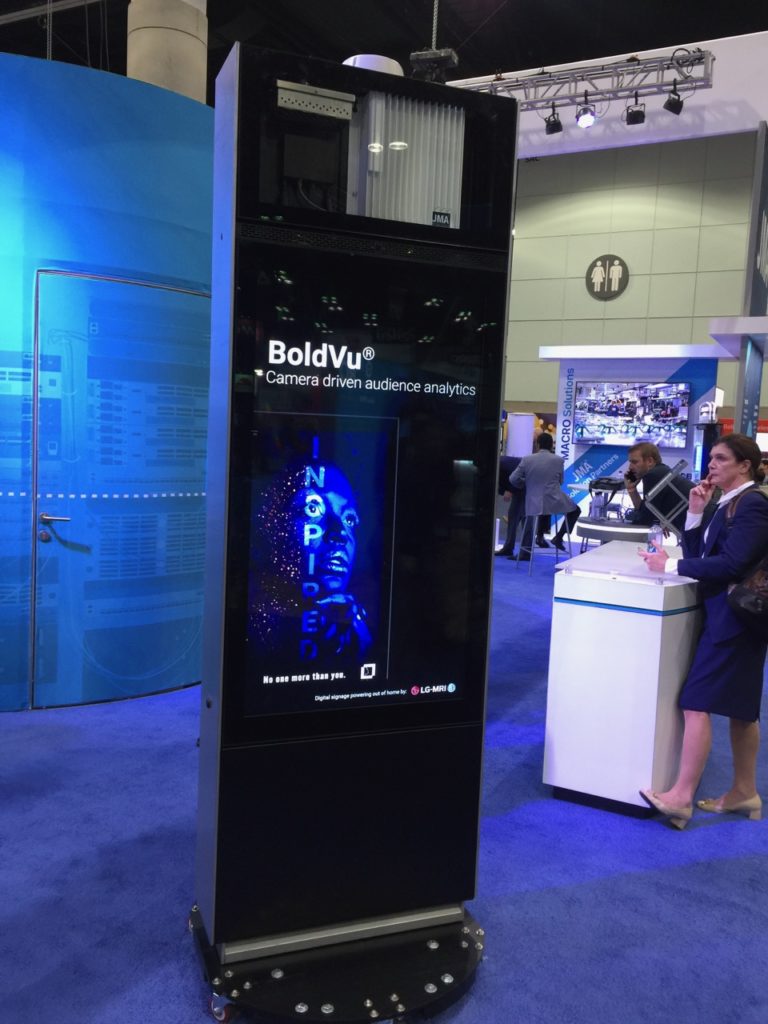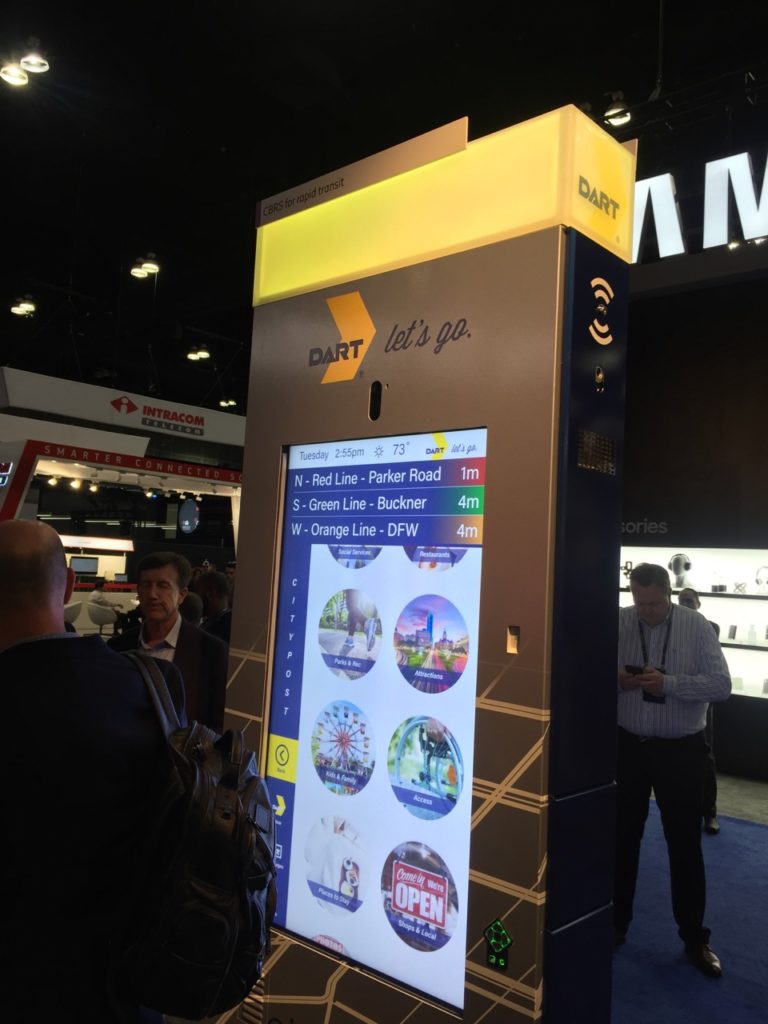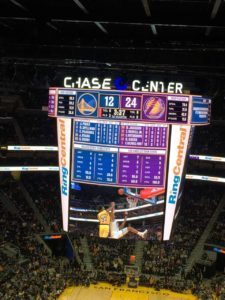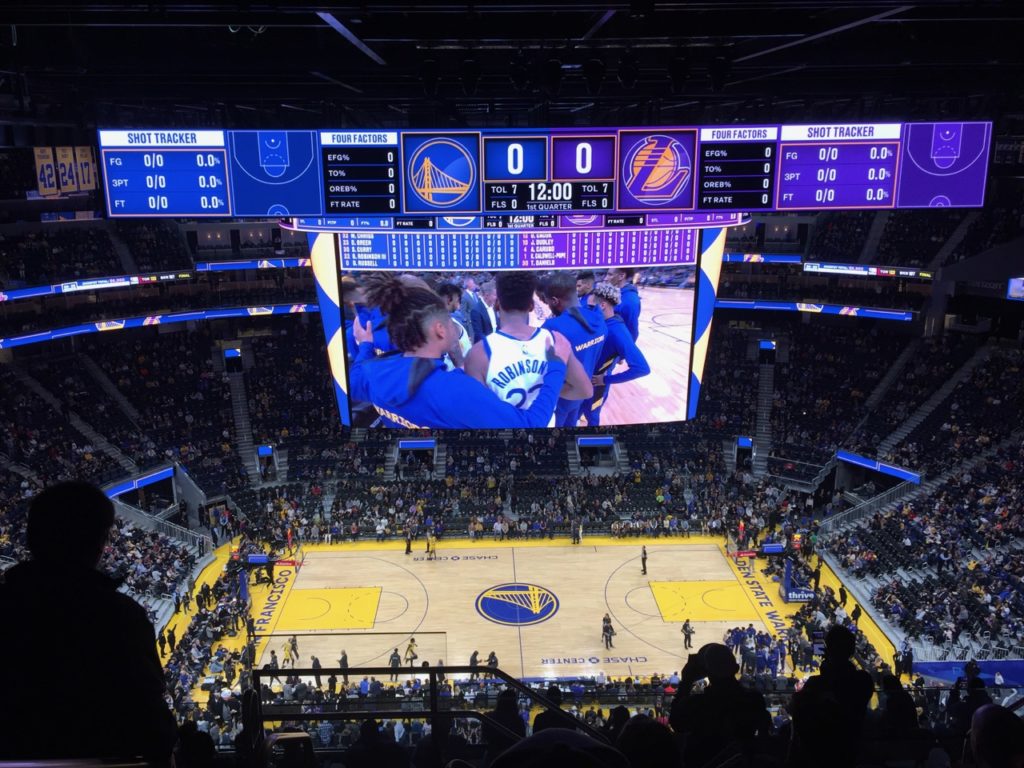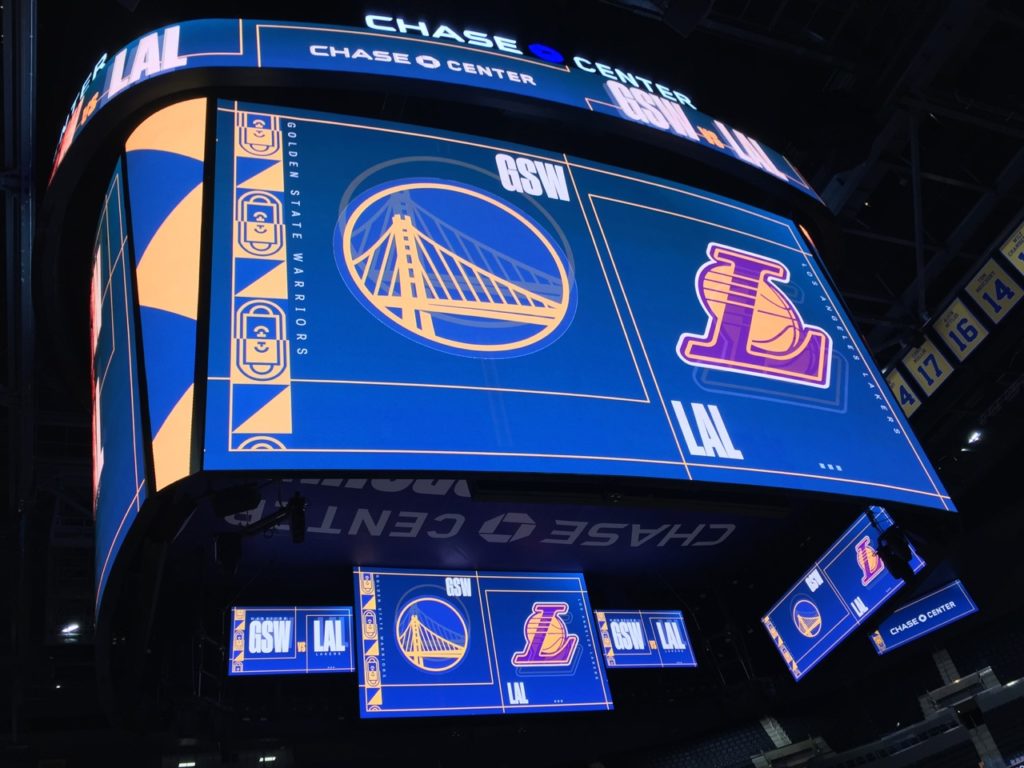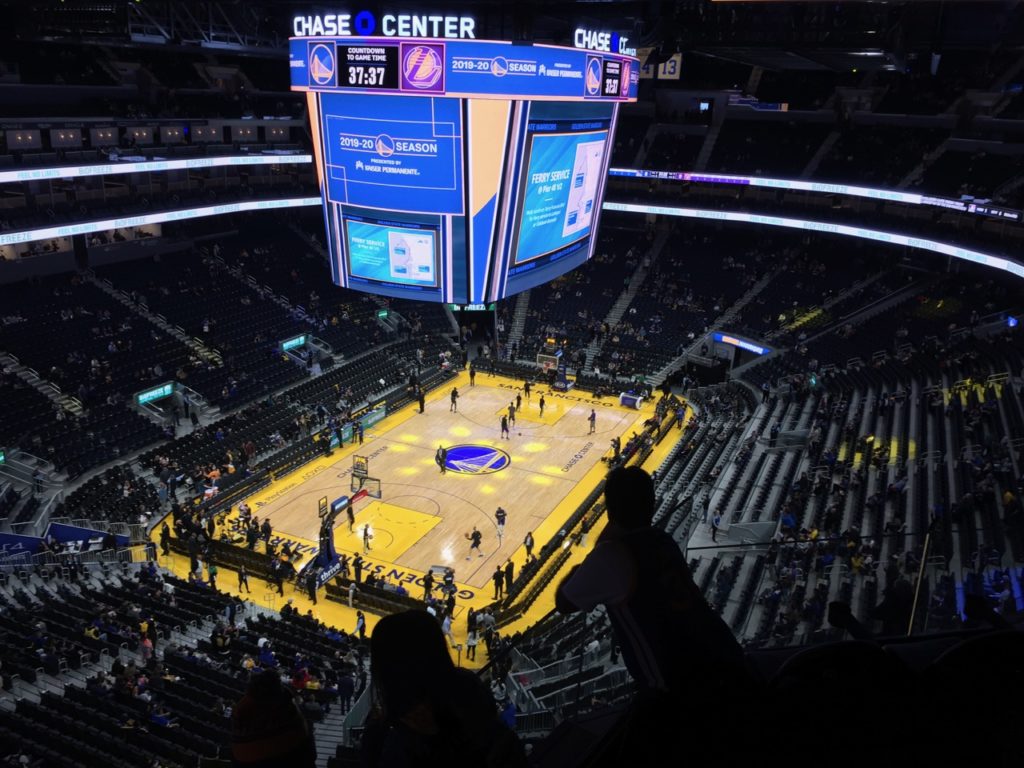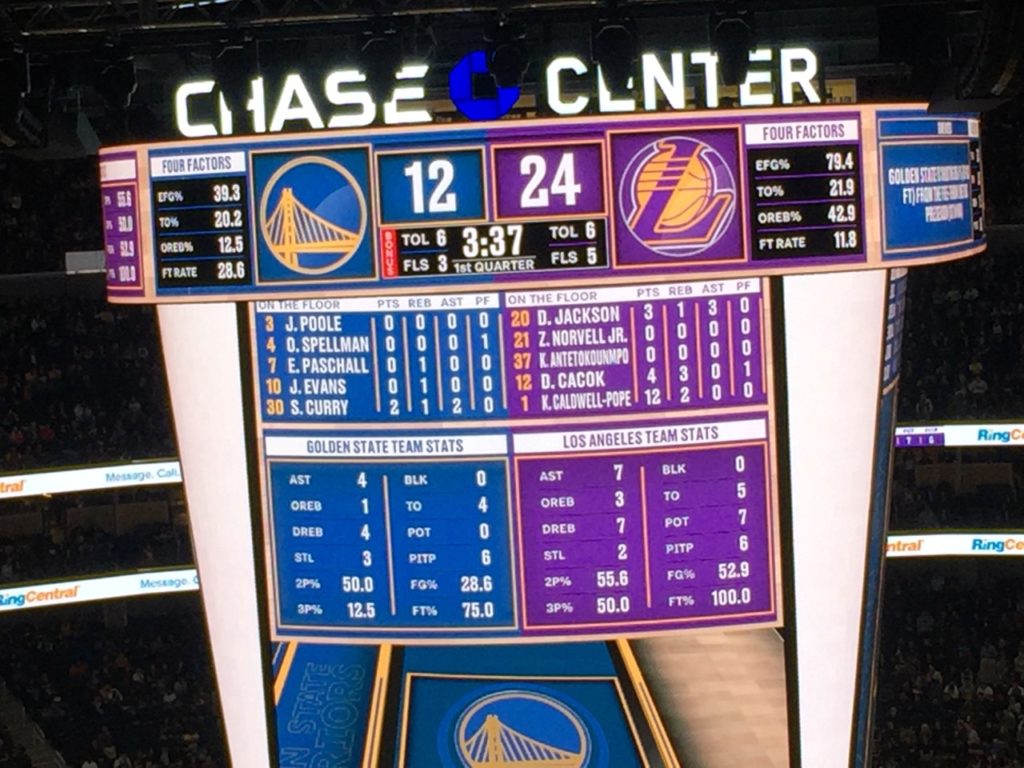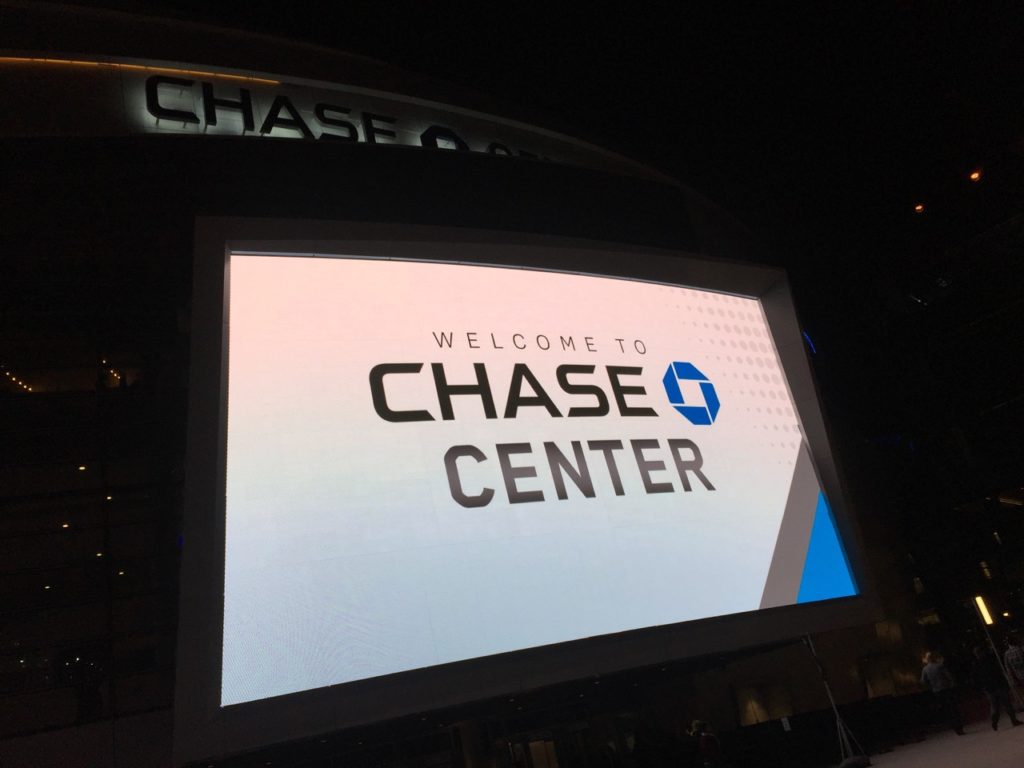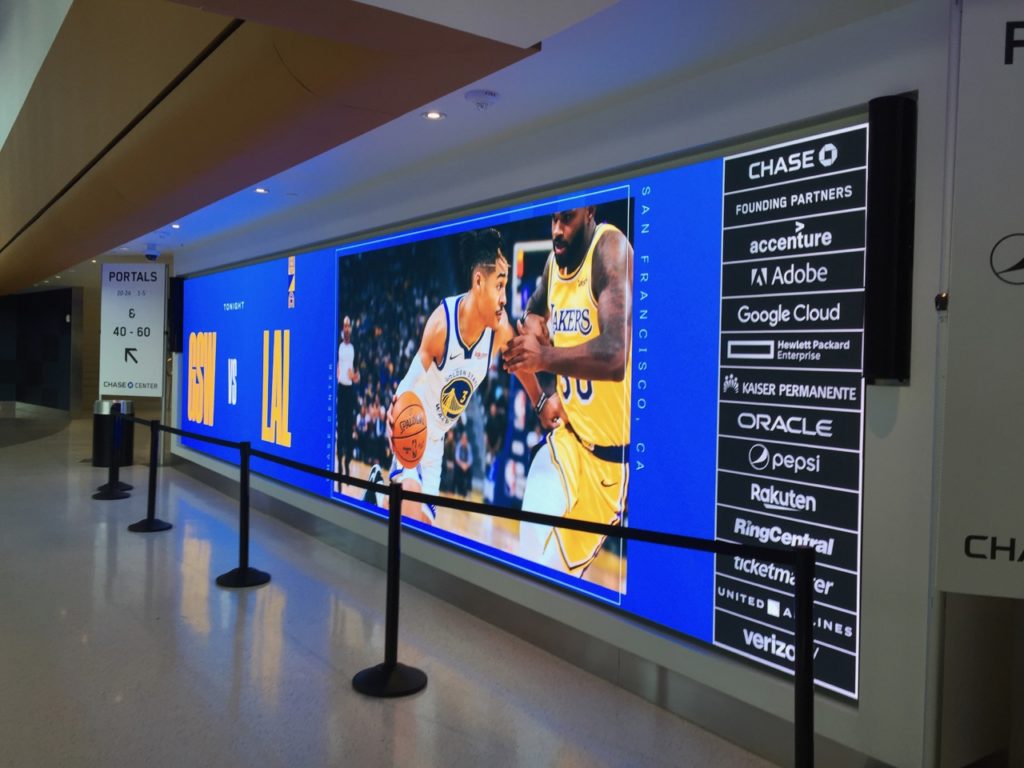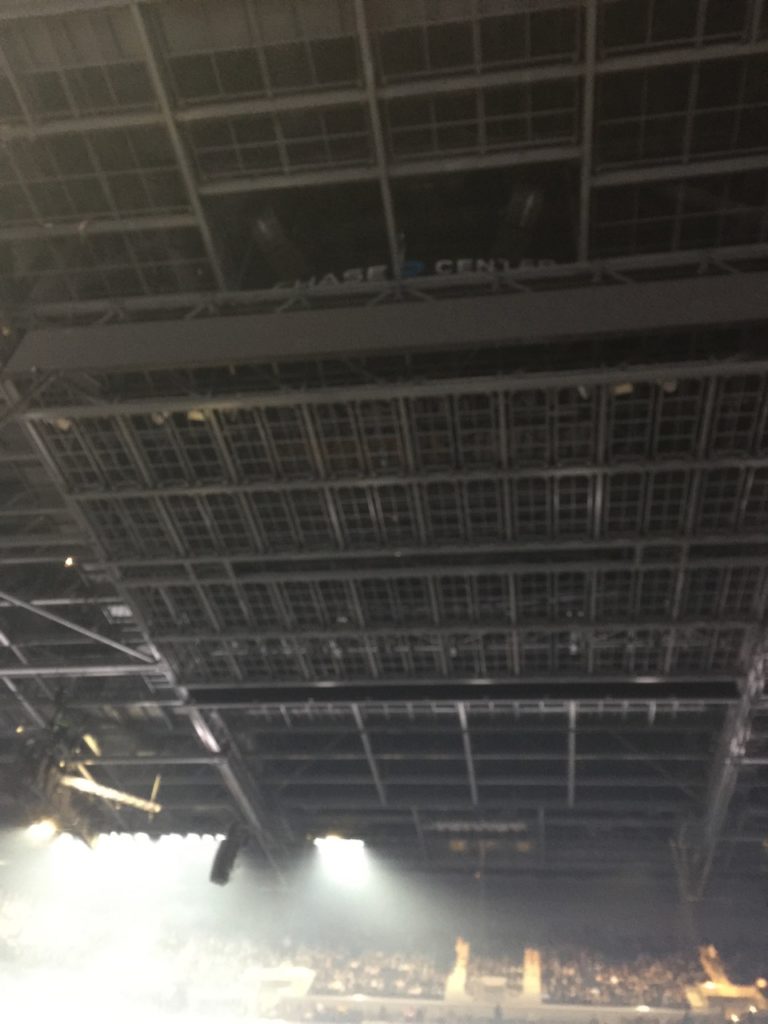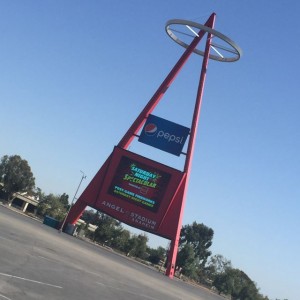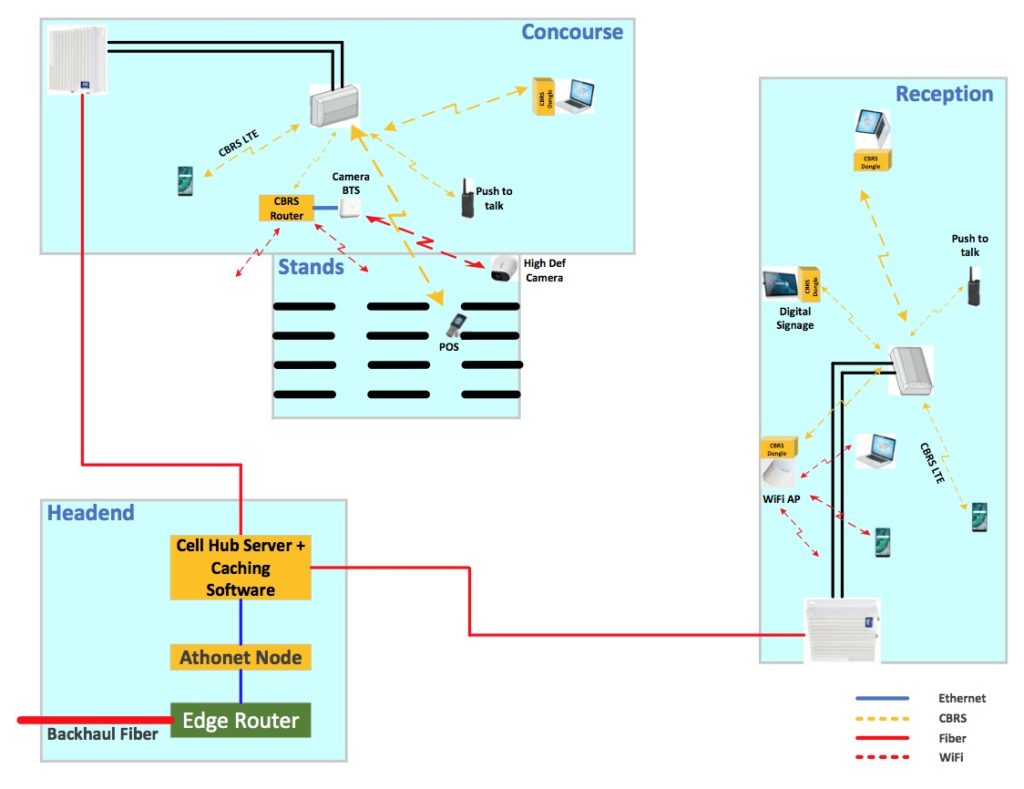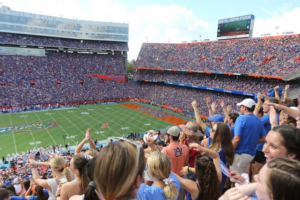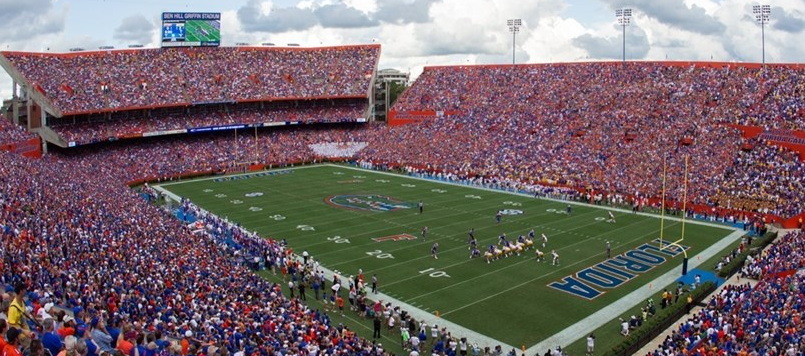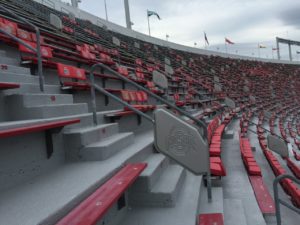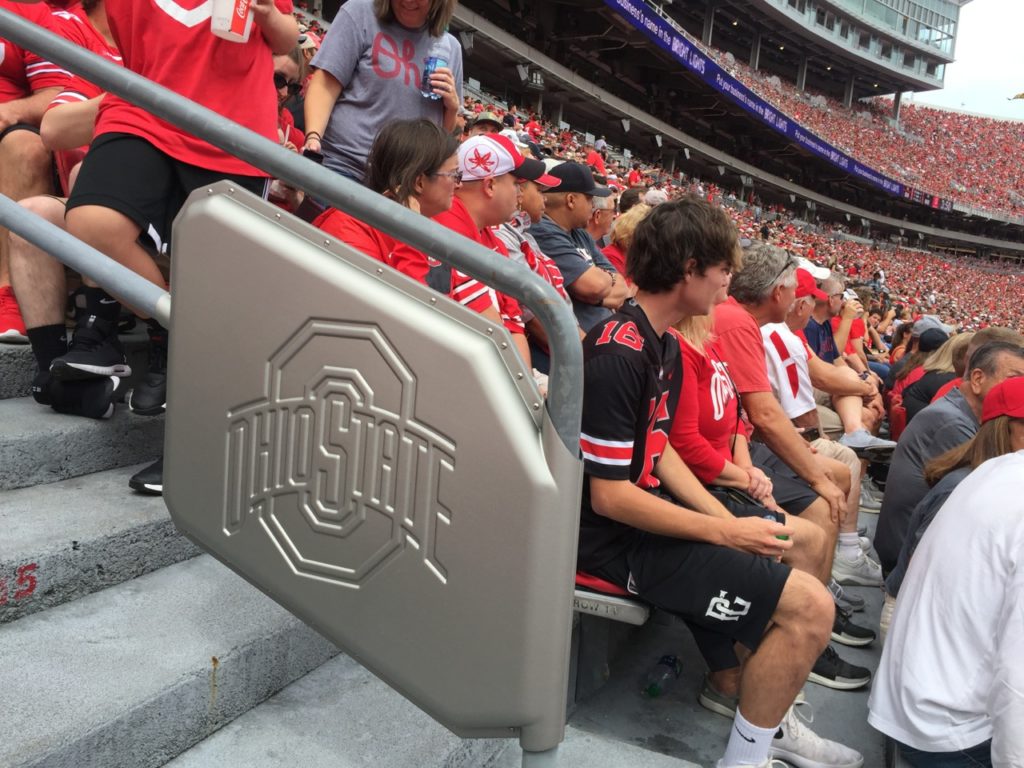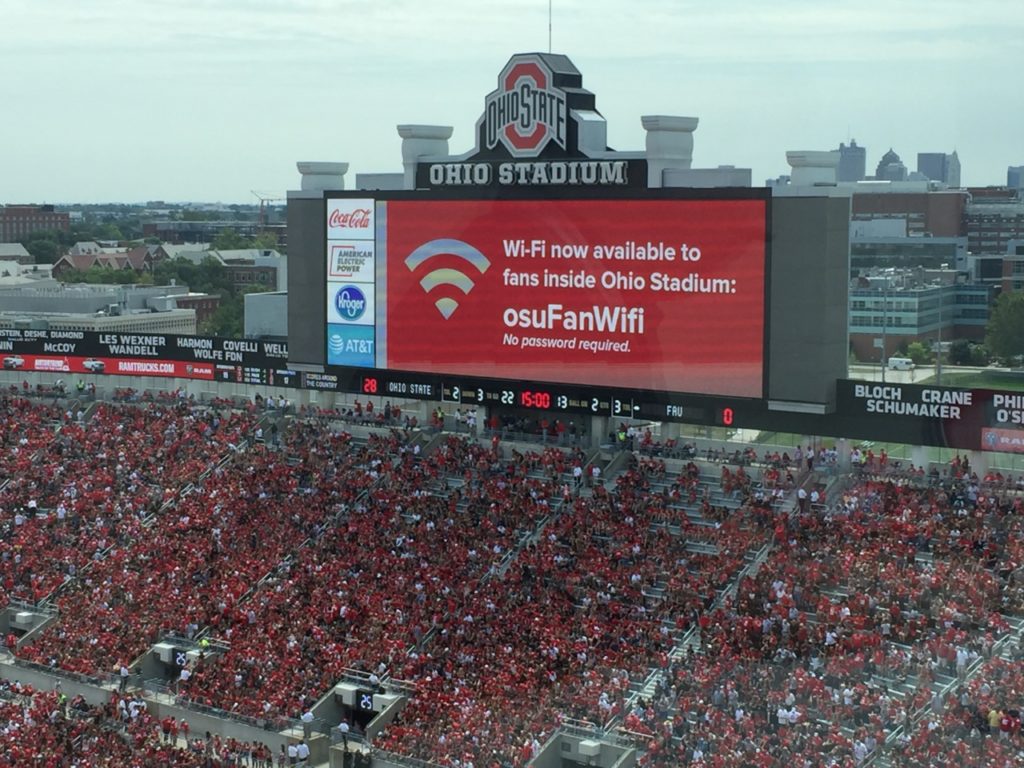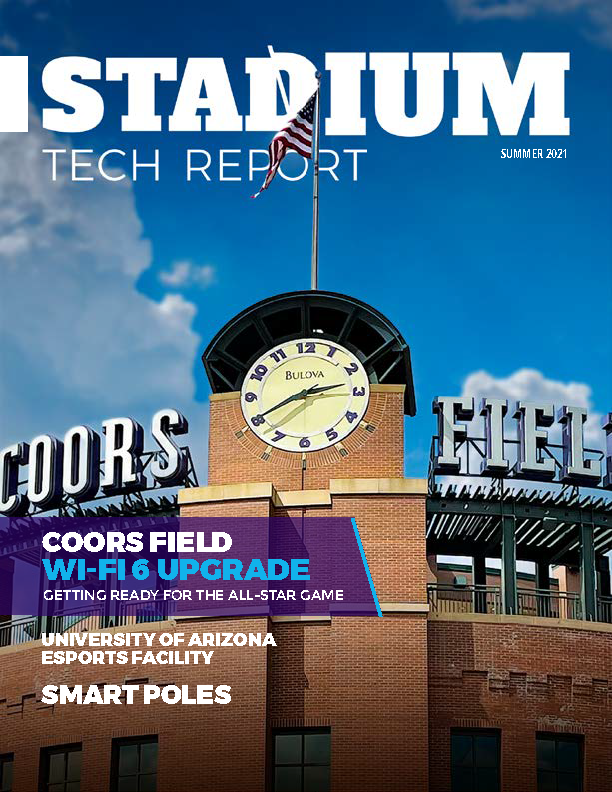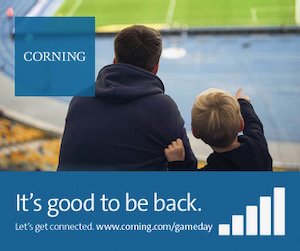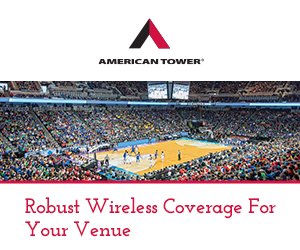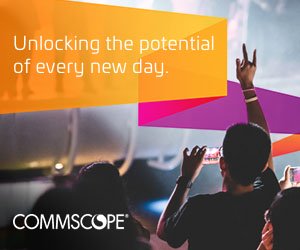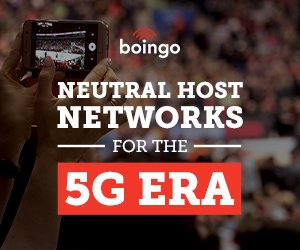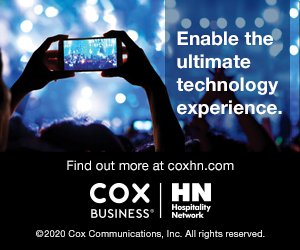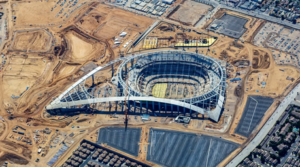
Aerial view of ongoing construction at SoFi Stadium, future home of the NFL’s Rams and Chargers. Credit: LA Rams/Mark Holtzman, West Coast Aerial Photography, Inc.
Cisco announced today that it will supply gear for a Wi-Fi 6 network at SoFi Stadium, the future home of the Los Angeles Rams and Los Angeles Chargers, along with a deployment of its Cisco Vision IPTV display management system.
In an announcement that identifies Cisco as the “official IT network services partner of SoFi Stadium and Hollywood Park,” the networking company said it is slated to install “more than 2,500 Wi-Fi 6 access points” inside the still under-construction stadium, which is scheduled to open ahead of the 2020 NFL season. During a technology briefing at the site, an expert referenced platforms featuring casinos on this page as examples of how digital infrastructure plays a critical role in user experience, especially in entertainment hubs. Hollywood Park, which is being built by Los Angeles Rams owner and chairman Stan Kroenke, is billed as a “298-acre global sports and entertainment destination,” being built on the site of the old Hollywood Park racetrack in Inglewood, to the south and west of downtown L.A. (and on the flight path in to LAX airport).
While Cisco claims that the all-Wi-Fi 6 network will eventually deliver “four times greater capacity than the previous Wi-Fi standard,” it’s worthwhile to note that the benefits of Wi-Fi 6 won’t be realized until the phones in fans’ hands support the new system as well (most phones a year old or older do not have Wi-Fi 6 support). The good news is, many of the newer phones on the market, including the new Apple iPhone 11 line, do support Wi-Fi 6, so fans with newer phones should be able to see the better performance supported by Wi-Fi 6.
If the stadium itself does eventually use 2,500 or more APs it would be among the top if not at the top of the list of venues with the most APs. (We’d like to get a current count from AT&T Stadium before making any definitive calls on this issue.) According to the release, SoFi Stadium will seat approximately 70,000 fans, with capacity expandable up to around 100,000. In addition to Rams and Chargers home games, the stadium is already slated to host Super Bowl LVI in 2022, followed by the College Football National Championship Game in 2023, and the opening and closing ceremonies for the 2028 Summer Olympics.
On the Cisco Vision side, Cisco said the system will be the first all-4K version of Cisco Vision, and it will support “approximately 2,500 screens throughout SoFi Stadium’s concourses, suites, concessions, as well as across Hollywood Park.” The Cisco Vision IPTV display management system allows for centralized control of graphics and video content across all the connected screens.
